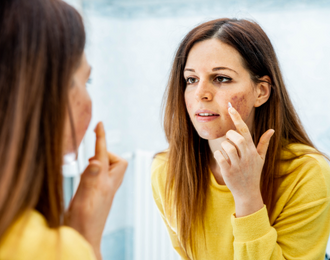Shedding a bright light on the effects of stigmatism on autistic individuals

Healthline – Updated for September 2021
Author: Ashley Welch
A new study found that autistic people have different risk factors for suicide and are at 3 times greater risk than the general population.
- A new study says that autistic people have more than three-fold higher rates of suicide and suicide attempt than the general population.
- Autistic females as well as people with additional psychiatric conditions are disproportionately affected.
- The study highlights gaps in care for autistic people, especially when it comes to diagnosis and resources for autistic adults.
Autistic people have more than three-fold higher rates of suicide and suicide attempt than the general population, according to new research.
The study also found that autistic girls and women had a notably higher risk, as did people with additional psychiatric conditions.
“This study out of Denmark is an important step forward in understanding the risk for suicide in people with autism,” said Donna Murray, PhD, vice president of clinical programs and head of the Autism Treatment Network (ATN) at Autism Speaks.
Most of the research on suicidality have been focused on smaller populations rather than a national dataset.
“This gives us a much more realistic understanding of how common this is for autistic people versus the general population, and by looking at the correlation with different risk factors, helps to pinpoint what we might be able to do to reduce suicide risk,” Murray said.
Dr. Sarah Mohiuddin, a child and adolescent psychiatrist at Michigan Medicine C.S. Mott Children’s Hospital who specializes in treating children with autism spectrum disorder (ASD), said the research shines a light on an under-recognized risk and mirrors what she sees in her practice.
“For a long time it was thought that individuals with autism could not experience this severity of illness,” she said. “So it’s nice to see a study replicating and describing in a systematic way what many of us who treat this population have been seeing for decades in clinic.”
According to the Centers for Disease Control and Prevention (CDC),Trusted Source about 1 in 54 children have ASD.
The prevalence of ASD has risen steadily in recent years, though experts say that has more to do with better monitoring and diagnosis rather than an actual increase in the number of autistic children.
For the study, researchers used a nationwide database to analyze data of more than 6 million people ages 10 and older living in Denmark from 1995 to 2016.
More than 35,000 of these individuals had a diagnosis of ASD. The results were published in JAMA Network Trusted SourceOpenTrusted Source.
Autistic people have different risk factors for suicide
In addition to rates of suicide and attempted suicide, the researchers looked at the risk in different populations within the autism community.
“The importance of our study lies not only in identifying the link between the ASD and suicidal behavior, but also in identifying risk factors, as this will help clinicians in the treatment of people with ASD,” study author Kairi Kõlves, PhD, of Griffith University in Brisbane, Australia, told Healthline.
Autistic girls and women were disproportionately affected, with a four-fold higher risk of suicide attempt compared to men.
Females also had a significantly higher rate of suicide than autistic males. “Higher risk of a suicide attempt in females is not unusual, however, the magnitude of it was rather surprising,” Kõlves said.
One potential reason for this higher risk may be that autistic females are typically diagnosed and treated later in life than males.
“There’s a lot of ongoing work looking at why that is,” Mohiuddin said. “It may be that their symptoms present differently at younger ages. They’re more social, have more in-tact nonverbal communication skills so that may make it confusing for clinicians to identify them.”
Additionally, females are more likely to experience anxiety and affective disorders, like depression, which, as the study demonstrated, are strong risk factors of suicide in autistic people.
In fact, the study found more than 90 percent of autistic people who attempted suicide or died by suicide had a co-occuring psychiatric condition.
Another important finding is that unlike the general population, risk of suicide doesn’t decrease with age for autistic people.
This makes sense, experts say, when taking into account the lack of support autistic people have once they finish school and begin early adulthood.
“Reaching social milestones can be more challenging in the ASD population,” Mohiuddin said. “I see many patients who describe a lot of distress in watching their peers and siblings have a romantic partner or get their first job while this can be very difficult for them.”
Mohiuddin pointed out that some autistic people are able to be successful in a K-12 environment with support from school and their parents.
However, things can become more challenging for them once they’re on their own and need to begin navigating scenarios that require more subtle social situations with more unsaid social rules.
This can also lead to feelings of sadness and loss that they’re missing out on these experiences.
“And you can see how that could be a driver for something like suicidality,” Mohiuddin said.
The researchers also found that high functioning autistic people are at higher risk of suicide, as they’re more likely to get less support.





